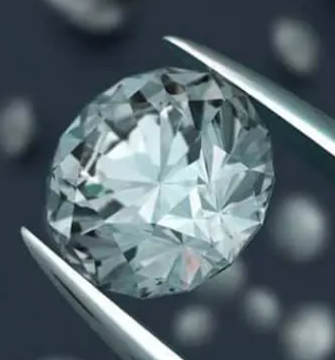Knowledge

Do Diamonds Have Serial Numbers?
To determine the authenticity of your smartphone, laptop, or any other expensive gadget you own, you would probably check its serial number. The serial number also tells you about the item’s features. But what about diamonds? Do diamonds have serial numbers?
Just like smartphones, diamonds also come with a serial number. That means you can look at the serial number of a diamond you just bought to determine its authenticity and features.
However, serial numbers for diamonds are a bit different from what you see on gadgets and other items – and we’ll tell you everything about that in this article.
Diamonds And Serial Numbers
If you’re not that experienced with diamonds and you want to buy the best one for the first time, you’d be overwhelmed by all the choices out there.
With differences in carat weight, color, clarity, the cut of the diamonds – and more importantly, how these features impact the price and quality of the stone – your options might be a bit more confusing, and you might overlook some other important factors.
As you search for the diamond with the best price and highest brilliance, you need to be careful not to overlook one crucial factor of the diamond.
We are talking about the diamond’s security feature. Yes, real diamonds have built-in security features – a serial number that tells you more about the stone.
However, not all diamonds have serial numbers. For example, in the US, only the graded gems come with serial numbers.
The GIA conducts the grading, and the serial number is engraved in the diamond due to the fact that it’s one of the essential certification processes for the stone. The serial number ensures that the elements of the stone match the identification number on its certification documents.
Note that other countries use similar grading and certification techniques as the GIA, though by different institutions. Diamonds are numbered with a series of specific numbers and letters.
The serial number on a diamond is a laser inscription that the GIA uses to pinpoint authentic diamonds that they have graded. This laser inscription is often applied to the edge of the stone, with the GIA’s report number appearing on it.
The laser inscription provides you, the buyer, with a unique way of linking the precious stone to the received GIA report. The GIA laser inscription is usually found running on the diamond’s girdle, specifically between the upper crown facet and the lower pavilion facet, on the thinner edge that separates the lower bit from the upper section of your diamond.


Which Diamonds Have Serial Numbers?
Diamonds with serial numbers are real diamonds whose characteristics regarding the carat weight, cut, color, and clarity have been certified. These are also the gems that come with certification documents.
Therefore, if you purchase a diamond with serial numbers and a certificate, the certificate will have your name on it after you buy it. And in case of theft, it should be easier to recover the gems.
While we’re at it, the gems with serial numbers would be the ones purchased from reputable jewelers – usually those who sell gemstones that have been certified by the GIA.
Why Is The Serial Number Important?
The main reason why you should purchase a diamond that has a serial number is that the GIA laser inscription acts as a crucial identification feature that gives you peace of mind when you purchase the diamond.
With many fake diamonds or even illegally obtained diamonds, also known as blood diamonds, coming to the market today, the laser inscribed serial numbers can verify that you’ve bought an authentic gem.
Another reason why you should generally buy a diamond with a serial number is that diamond merchants, as well jewelry producers and retailers, handle huge volumes of certified diamonds that weigh less than 1 carat. And some of the stones pass as “authentic” even when they’re not.


Tips For Reading The Laser Inscription On Your Diamond
While the laser inscription on the precious stone allows you to verify that the diamond is genuine and protects your interests, it often takes a trained eye to locate the serial number and decipher it.
The inscription on the diamonds is microscopic. That means that it won’t be visible to the naked eye, and you would need a loupe to see the inscription. Keep in mind that the serial number needs to fit in a minimal area on the diamond’s girdle, and it mustn’t affect the diamond’s appearance.
Generally, you might have on hand a 10x loupe, but it doesn’t have the power you need. For a clear and accurate view, you need a microscope that has 20x magnification power.
It’s going to take a bit of time for you to view the serial number.
However, as long as the serial numbers aren’t too faint, you should be able to see it under 20x magnification. On the other hand, you would probably struggle to read the entire number with a 10x loupe.
